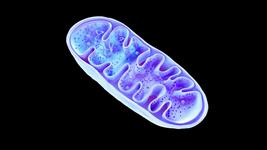CMN Weekly (17 November 2023) - Your Weekly CRISPR Medicine News
By: Karen O'Hanlon Cohrt - Nov. 17, 2023
Top picks
- Vertex Pharmaceuticals and CRISPR Therapeutics announced yesterday that the UK's Medicines and Healthcare products Regulatory Agency has authorised the first ever CRISPR-Cas9 gene-editing therapy, CASGEVY™ (exa-cel), for the treatment of sickle cell disease (SCD) and transfusion-dependent beta thalassemia (TDT). The approval follows positive data from two global clinical trials of CASGEVY in SCD and TDT; both trials met their respective primary outcome of becoming free from severe vaso-occlusive crises or becoming transfusion-independent for at least 12 consecutive months. An estimated 2,000 patients are eligible for CASGEVY in the UK. Read the officical press release here.
- First trial of ‘base editing’ in humans lowers cholesterol — but raises safety concerns. This news piece in Nature looks at the positive clinical data for base-editing candidate VERVE-101 released this week, which demonstrates the first proof-of-concept for in vivo base editing in humans, as well as safety concerns that have arisen following two serious adverse events in the trial, including a single death.
Research
- In an article published this week in Journal of Virology, researchers in the US report the identification of host essential factors for recombinant adeno-asssociated virus (AAV) transduction of the polarised human airway epithelium. Among their findings, which are expected to aid the advancement of gene therapies for lung diseases, are that: the multiple AAV serotype receptor KIAA0319L is not essential for vector internalisation but is critical for efficient vector transduction to human airway epithelia, and that WDR63, a novel gene of unknown function, plays an important role in vector transduction of human airway epithelia but not vector internalisation and nuclear entry. The team also discovered the substantial transduction potential of rAAV2.5T in basal stem cells of human airway epithelia, which supports its utility in gene editing of human airways.
- A research team across multiple institutes in China reports this week that in vivo base editing of Scn5a rescues Type 3 Long QT syndrome (LQT3) in mice. LQT3 results from too little sodium flowing through the heart's ion channels, which leads to the occurence of potentially-fatal arrhythmias during sleep or rest, caused by a slow heart rate. The team first generated a LQT3 mouse model by introducing the T1307M pathogenic variant into the Scn5a gene. The adenine base editor was split into 2 smaller parts and delivered into the heart by adeno-associated virus serotype 9 (AAV9-ABEmax) to correct the T1307M pathogenic variant. Both homozygous and heterozygous T1307M mice showed significant QT prolongation. A single intraperitoneal injection of AAV9-ABEmax at postnatal day 14 resulted in up to 99.20% Scn5a transcripts corrected in T1307M mice, and no off-target edits were detected in the hearts of treated mice. The findings were published in Circulation.
- Researchers in Saudi Arabia and the US introduce CRISPR-broad, a standalone, open-source application that defines gRNAs with multiple but specific targets in large continuous or spread regions of the genome, as defined by the user. The ability to identify multi-targeting gRNAs and corresponding multiple targetable regions in genomes is based on a novel aggregate gRNA scoring derived from on-target windows and off-target sites. When the team applied CRISPR-broad to the genomes of the nematode Caenorhabditis elegans and humans, they could verify its efficiency in determining multi-targeting gRNAs and ranking potential target regions optimised for broad targeting. The team also demonstrate the general usability of CRISPR-broad by cellular mapping of a large human genome element using catalytically-dead Cas9 fused to green fluorescent protein. The findings were published this week in Scientific Reports.
- The bacterial species Clostridium novyi has demonstrated selective efficacy against solid tumours largely due to the microenvironment contained within dense tumour cores. C. novyi is attracted to the tumour microenvironment and once there, can both lyse and proliferate while simultaneously re-activating the suppressed immune system. To prevent systemic toxicity caused by C. novyi and simultaneously increase bacterial persistence upon intravenous administration, a team of researchers in the US used CRISPR-Cas9 to generate an engineered form of C. novyi in which the gene encoding RGD, a tumour-targeting peptide, is expressed within the promoter region of a spore coat protein. The found that expression of the RGD peptide on the outer spore coat of the resulting strain indicates an increased capacity for tumour localisation of C. novyi upon intravenous introduction based on the natural binding of RGD with the αvβ3 integrin commonly overexpressed on the epithelial tissue surrounding a tumour, and leads to immune stimulation. Their findings were published earlier this week in PLoS One.
- In an article published this week in BMC Biology, researchers in the US and Chile report that CRISPR-mediated removal of a partial genomic duplication restores synaptic transmission and behaviour in the MyosinVA mutant mouse Flailer, which is a model for autism and anxiety.
Industry
- Precision Biosciences presented late-breaking data earlier this week at the American Association for the Study of Liver Diseases (AASLD) The Liver Meeting, held in Boston. The presentation in poster format highlights pre-clinical data demonstrating PBGENE-HBV’s ability to eliminate covalently closed circular DNA (cccDNA) and inactivate hepatitis B virus (HBV) DNA in non-humam primates. PBGENE-HBV represents a specific, novel therapeutic approach to treating chronic HBV infection. The meganuclease-based therapeutic candidate is designed to directly cut and edit cccDNA, which is responsible for viral persistence and resistance to current anti-viral treatments, and inactivate integrated HBV DNA with high specificity, resulting in degraded cccDNA and a reduction in hepatitis B surface antigen (HBsAg).
- Also at the AASLD The Liver Meeting this week, Tune Therapeutics revealed its epigenetic-editing programme for HBV. The approach leverages Tune's proprietary ‘genetic tuning’ platform TEMPO to achieve a functional cure through the permanent, epigenetic repression of viral activity, targeting both integrated viral DNA as well as cccDNA. The company will present pre-clinical data at the 2023 Hep DART Conference to be held in December, and expects to begin clinical testing by the end of 2024.
- Intellia Therapeutics has received European Union Orphan Drug Designation for its in vivo gene-editing candidate NTLA-2002. NTLA-2002 is being developed as a single-dose curative treatment for hereditary angioedema, and the company released positive clinical data from an ongoing trial of the candidate earlier this year. The U.S. FDA granted Intellia with an orphan drug designation for NTLA-2002 for treating HAE in September 2022, and in January 2023, the company was awarded an Innovation Passport by the UK Medicines and Healthcare products Regulatory Agency for NTLA-2002 for the treatment of HEA.
- Earlier this week at the American Heart Association’s Scientific Sessions 2023 in Philadelphia, Verve Therapeutics announced the first human proof-of-concept data for in vivo base editing from the ongoing Phase 1b heart-1 clinical trial of VERVE-101. Verve is developing VERVE-101 as a single-dose base-editing treatment for heterozygous familial hypercholesterolemia (HeFH). The new data revealed dose-dependent reductions of disease-causing low-density lipoprotein cholesterol (LDL-C) in two patients treated with a single, potentially therapeutic dose of VERVE-101. Read more in our clinical trial update here.
Detection
- Human 8-oxoguanine DNA glycosylase (hOGG1) is an essential enzyme that recognises and removes 8-oxoguanine (8-oxoG), a common DNA oxidative damage caused by reactive oxygen species, to maintain genomic integrity of living organisms. Abnormal hOGG1 expression is associated with various diseases including cancer and neurogenerative disorders, making it a potential biomarker and therapeutic target. In an article published yesterday in Microchimica Acta, scientists in China report the development of a novel detection strategy for hOGG1 activity based on CRISPR-Cas12a trans-cleavage triggered by cleavage ligation of a dumbbell DNA probe (DBP) designed with a 3’ overhang and an 8-oxoG modification. With a reported limit of detection of 370 μU/mL, high selectivity, and the ability to detect hOGG1 activity in cell lysates, the method could be applicable in disease diagnosis and scientific research.
Reviews
- CRISPR/Cas9 system: recent applications in immuno-oncology and cancer immunotherapy. This review provides a comprehensive overview of CRISPR-Cas9 applications that advance our insights into tumour-immune interaction and lay the foundation to optimise cancer immunotherapy. The authors explain the principles of CRISPR-Cas9 editing and introduce CRISPR as a tool in tumour modelling, before focusing on CRISPR screening strategies for target discovery that reveal tumourigenesis, immune evasion, and drug-resistance mechanisms. The authors also discuss recent breakthroughs in genetically-modified adaptive cell therapy.
- Recent application of CRISPR-Cas12 and OMEGA system for genome editing. This review focuses on Cas12 and OMEGA endonucleases and discusses their structure, biochemistry, off-target effects, and applications in therapeutic gene editing.
Webinars
- On Wednesday, November 22, CRISPR Medicine News is holding a free webinar entitled "Physiological roles of aberrant DNA methylation in vitro and in vivo" by Gabriella Ficz at the Barts Cancer Institute, London. She has used CRISPR technology to investigate the interplay between DNA methylation and cancer. Her latest findings reveal the heritability of artificially induced disease-specific methylation patterns in primary cells. These mechanisms might contribute to cancer initiation and hint at future therapeutic and preventative avenues.
- Our most recent webinar - A Dual CRISPR Strategy Eliminates HIV in Humanised Mice - is now available on demand. It features Professors Kamel Khalili and Howard Gendelman, who are determined to develop a one-shot cure for HIV-1 and use CRISPR to attack the virus on multiple fronts.
News from CRISPR Medicine News
- In this week's clinical trial update, we provide a summary of recent clinical data from the ongoing heart-1 trial of VERVE-101 in patients with advanced heterozygous familial hypercholesterolemia (HeFH). Read the update here.
To get more CRISPR Medicine News delivered to your inbox, sign up to the free weekly CMN Newsletter here.
Tags
ArticleMissing linksNewsCMN WeeklyCRISPR Therapeutics AGIntellia Therapeutics, Inc.Precision BioSciences, Inc.Tune TherapeuticsVertex Pharmaceuticals, Inc.Verve Therapeutics, Inc.
CLINICAL TRIALS
IND Enabling
Phase I
Phase II
Phase III
Recurrent or Progressive High-grade Glioma, (NCT06737146)
Sponsors:
Suzhou Maximum Bio-tech Co., Ltd.
Sponsors:
Suzhou Maximum Bio-tech Co., Ltd.
IND Enabling
Phase I
Phase II
Phase III
Advanced Peritoneal Malignancies or Abdominal Metastatic Solid Tumors, (NCT06912152)
Sponsors:
Zhejiang University
Sponsors:
Zhejiang University
IND Enabling
Phase I
Phase II
Phase III







